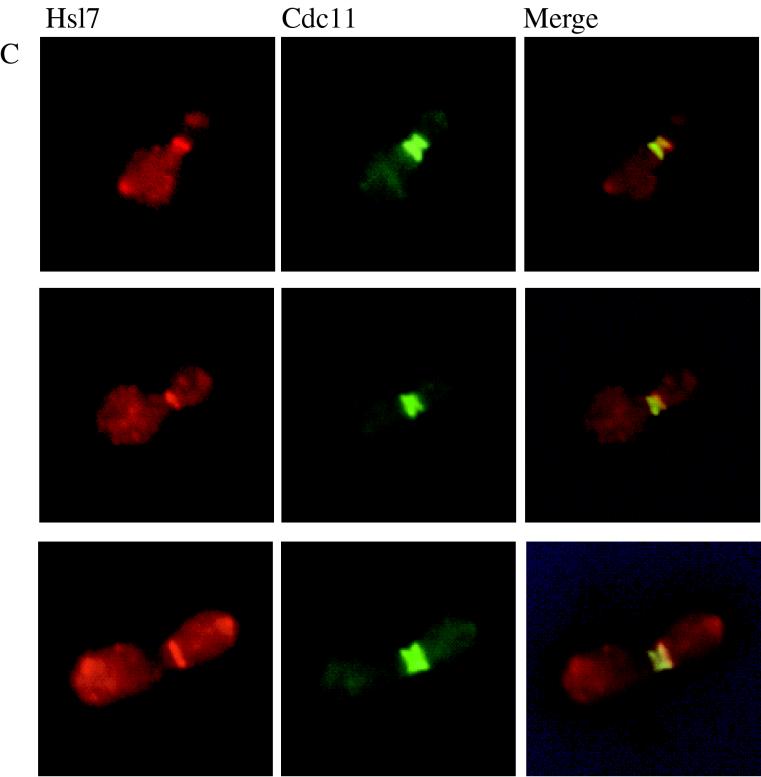FIG. 2.
Both a GFP-Hsl7 chimera and native Hsl7 localize to the daughter-side septin ring. Strain MJY112 cells transformed with CEN plasmids expressing GFP-Hsl7 from either the authentic HSL7 promoter (A) or the GAL1 promoter (B) were grown to mid-exponential phase at 30°C in SCGlc-Trp or SCRaf-Leu (followed by induction with 2% galactose for 2 h), respectively, and samples of each culture were viewed directly in a fluorescence microscope, as described in Materials and Methods. Strain MJY112 was grown to mid-exponential phase in YPGlc at 30°C, fixed, permeabilized, costained with affinity-purified mouse anti-Hsl7 antibodies (detected with a Cy3-labeled secondary antibody) and with purified rabbit antibodies directed against the septin, Cdc11 (detected with a FITC-labeled secondary antibody), and viewed in the fluorescence microscope, as described in Materials and Methods (C). Three different individual cells are shown, and the images were merged by using appropriate computer software, as described in Materials and Methods.



